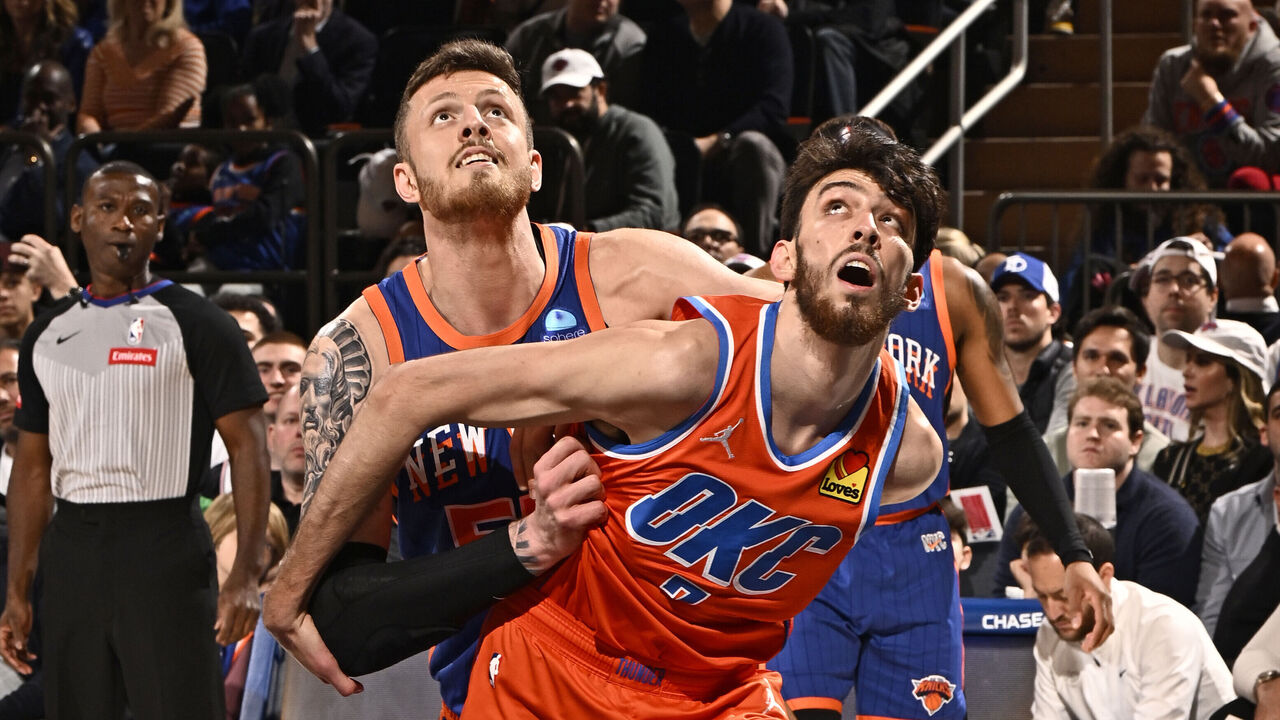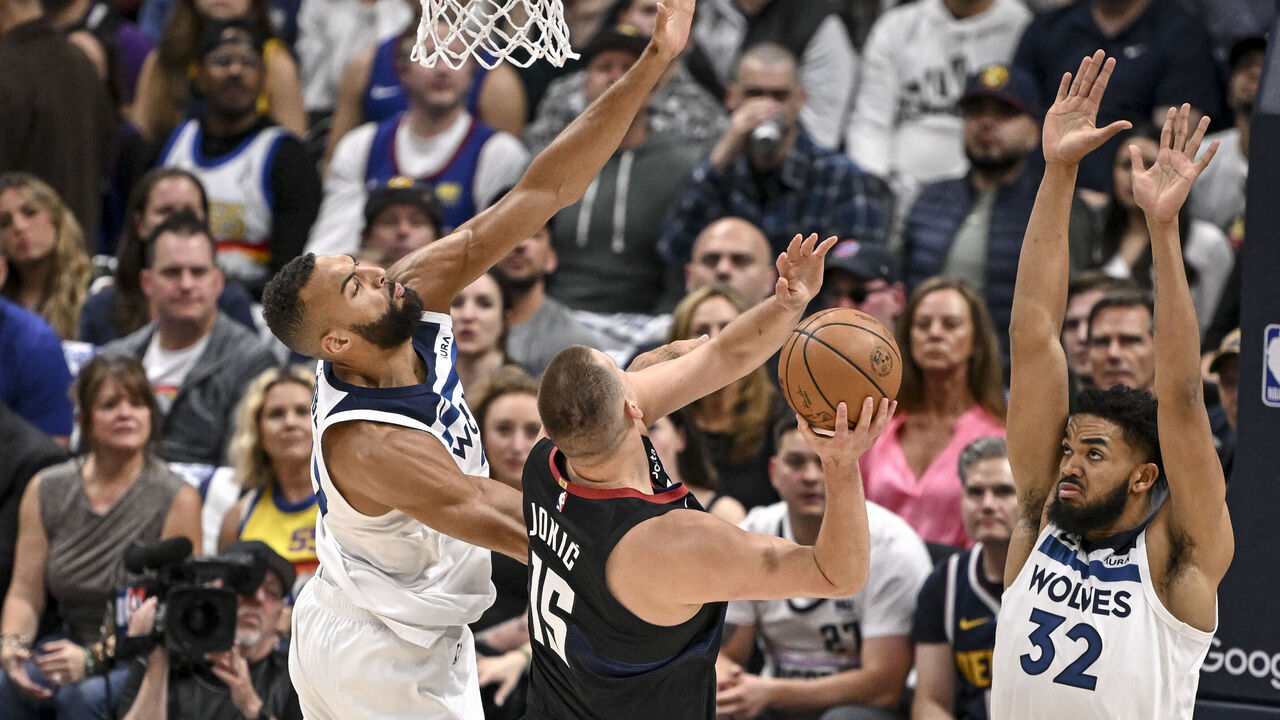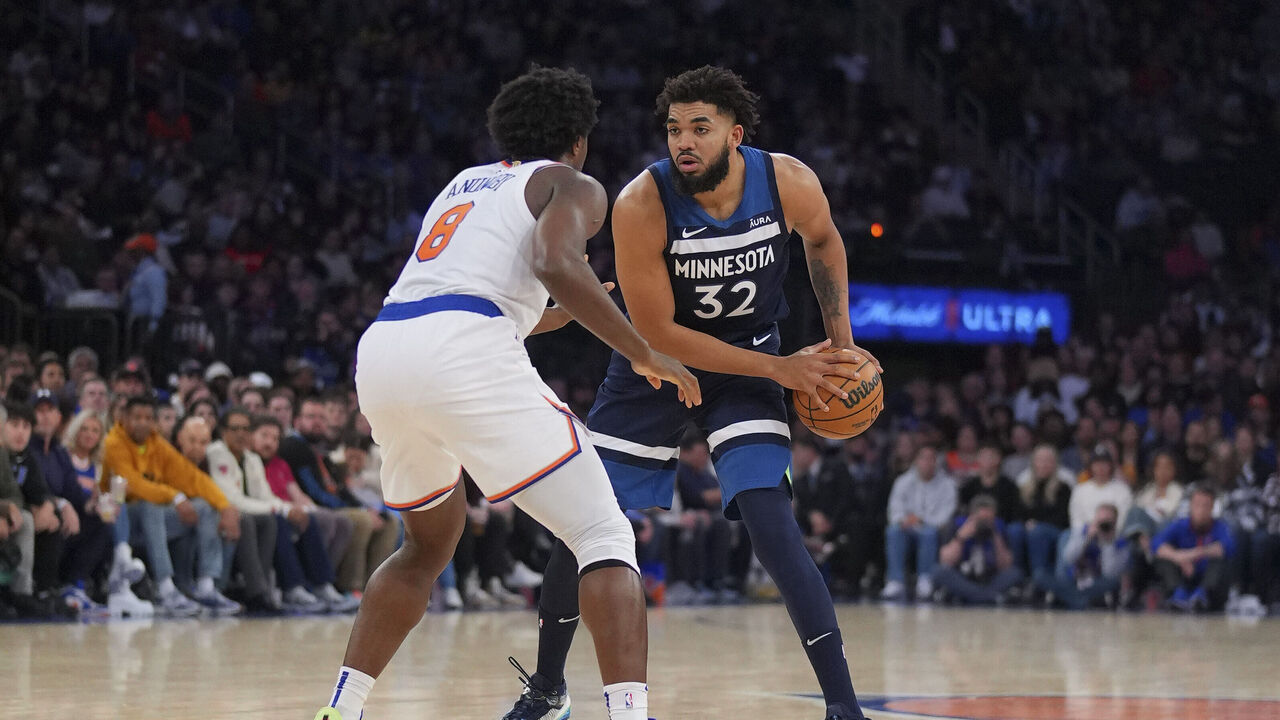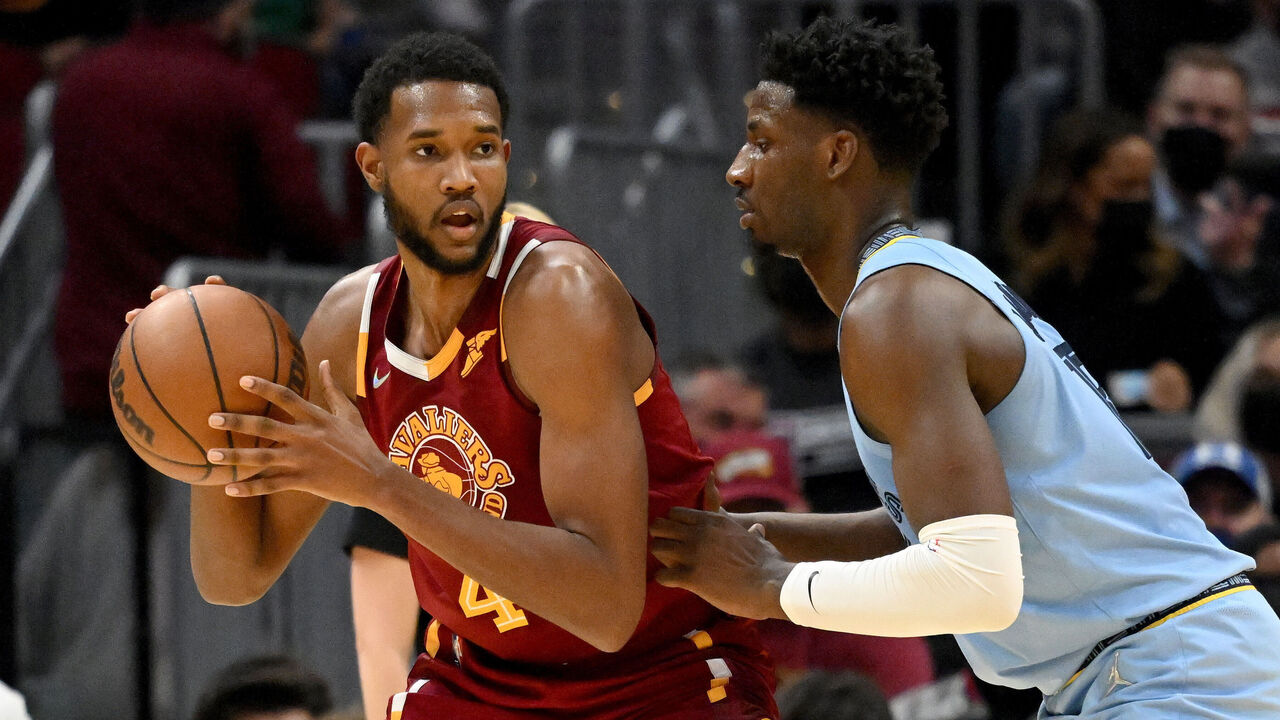Fantastic 4s: How the power forward spot will shape this NBA season
There's something interesting going on at the power forward position in the NBA, a trend that feels like it's moving in two directions at once.
When I wrote about the state of the position a few years ago, the league was breaking into distinct factions regarding frontcourt construction. Most teams had come to treat the four-spot as another perimeter position, filling it with big wing types who could bomb threes, handle the ball, pass, and switch liberally on defense. A small handful of others were starting to zag back the other way, deploying two-big lineups featuring power forwards who could protect the rim and rebound like centers.
Now as then, the ideal fours are those capable of melding the two categories into one. But even with continued skill development for big men across the league, there still aren't a ton of guys capable of ticking all those boxes; most teams have to choose one lane or the other. As such, the type of player who occupies the power forward spot dictates a significant aspect of a team's identity. The notion of "playing big" usually comes down to the size and skill profile of the player a team slots at the four.
The question of how best to utilize that lineup spot is set to shape the coming season for several contenders (including two that exchanged power forwards last weekend), and by extension, the league as a whole.

Two-big lineups have continued to experience a mini resurgence since that piece was published in 2020. The Lakers won the title later that year while starting Anthony Davis at the four, the Bucks won it the following year with their enormous frontcourt of Giannis Antetokounmpo and Brook Lopez, and teams like the Cavaliers and Grizzlies subsequently found regular-season success by trotting out dual bigs for extended stretches.
The Timberwolves joined the party when they traded a truckload of future assets for Rudy Gobert and bumped Karl-Anthony Towns to the four, a pairing that looked rocky in Year 1 but paid massive dividends last season before being broken up on the eve of 2024 training camp. (Towns will revert to being a full-time center with the Knicks, for now.) This summer, the Thunder made a similar but much lower-stakes gambit by signing center Isaiah Hartenstein to power-forwardize their erstwhile stretch-five, Chet Holmgren.
Though most of those configurations include at least one big who can shoot threes passably, and no two are exactly alike, upsizing tends to mean trading spacing at one end for the ability to shrink the court at the other. What you might lose in speed and shot creation you tend to gain in defensive scheme versatility, secondary rim protection, and rebounding (the latter has become especially important as the league collectively rediscovers the benefits of crashing the offensive glass).
While playing two bigs can be a boon on offense by virtue of second-chance creation or the value of high-low passing and interior finishing, that end of the floor still mostly favors smaller, stretchier fours. For that reason, large wings remain the preeminent power forward archetype, and the fact Boston romped to the title while primarily playing Jaylen Brown there will likely only reinforce the notion that it's the best blueprint for building a winner. Those Celtics feel anomalous, though, in ways reminiscent of Warriors teams that once begot small-ball imitators. How many teams can get to true five-out spacing, with no defensive weak links, while having their point guard regularly defend opposing centers or man the middle of a 2-1-2 zone?
The 76ers, arguably the biggest threat to the Celtics in the East after a blockbuster summer, may ultimately encounter their own power forward identity crisis. For now, they're set up to have one of their new wing imports (Paul George or Caleb Martin) start at the four, which would be practically different but stylistically similar to having Tobias Harris in that spot last year. Those guys are both vastly better defenders than Harris, and the Sixers' single-big offense could be good enough to supersede any downside. But that configuration did lead to rebounding and overall physicality issues that a balky Joel Embiid couldn't patch.
That's why the team signed 260-pound bruiser Guerschon Yabusele as a potential stopgap. An in-season trade would likely be geared toward addressing the same soft spot. In the meantime, we may see some lineup trial and error, up to and possibly including playing Embiid and Andre Drummond together. Scoff if you want, but Chicago ran out a Drummond-Nikola Vucevic frontcourt for over 200 minutes last season and it was one of the few things that kind of worked for those Bulls. Lineups featuring that tandem produced a 120 offensive rating, thanks largely to a 44% offensive rebound rate.

One of the luxuries double-big teams enjoy is the ability to flip-flop those bigs on defense as necessary. That's become an important card to play against Embiid and Nikola Jokic, the uber-skilled giants who've duopolized the MVP conversation the last four years. The default strategy for defending the Nuggets now is to have your team's best rim-protector play "spy" on the back line while another big man or bulky forward jostles with Jokic on the block and stays glued to him on the roll. That tactic was critical to Minnesota's second-round win over Denver in the spring, after emerging as a key part of Boston's strategy for besting Embiid and the Sixers the postseason prior.
The West is loaded and the Wolves can't only be thinking about beating the Nuggets, but it's worth noting they wouldn't have had a hope of unseating the defending champs if not for Towns' post defense on Jokic in that series. It'll be interesting to see whether they can maintain a semblance of their defensive template with the smaller Julius Randle.
Randle is under huge pressure to prove he can fit into the existing architecture of a contender. He doesn't slot neatly into the wing-four or big-four paradigm, but rather floats between those two poles as something of a "traditional" power forward, which comes with benefits and drawbacks. It means he's powerful enough to bully size mismatches and keep opposing bigs off the glass, but he isn't the caliber of rim-protector who can insulate another big or anchor a defense without one. It means he can score down low and create for himself inside the arc, but he isn't a significant threat beyond it. Randle does plenty of things better than Towns, but Towns clears him in the two ways that are arguably most important for a complementary frontcourt player: He's a better floor-spacer and a better interior defender.
Towns also served as a playmaking conduit who would get the ball from Minnesota's guards to Gobert on offense, and that's an area in which Randle can be his equal or superior. But remember, it took a long time for Towns and Gobert to fully click. The Wolves can't afford to burn another season while their frontcourt irons out kinks.
Minnesota's Northwest rivals in OKC will also be firmly in the championship mix, and have a chance to keep shifting the team-building paradigm if they win big (and win "Big"). Last year's Thunder had a mishmash of big and small identities. Their guards were huge, no one in their rotation stood shorter than 6-foot-4, and they had a 7-foot-1 center who entered the league as one of its best rim-protectors. At the same time, they typically had 6-foot-5 Jalen Williams manning the four because there wasn't a power forward-sized player on the roster.
They ranked 28th in the league in rebound rate, a product not only of Holmgren's willowy build but also the lack of big forwards capable of cleaning up behind him when he switched out or leaped to contest shots within OKC's ultra-aggressive scheme. So the team paid a premium to add another 7-footer who inhales boards at a level few others in the league can match. Hartenstein can now patrol the back line whenever Holmgren gets pulled away from the basket, or vice versa.
Hartenstein's a tremendous rim-protector who'll bolster a defensive unit that ranked fourth in points allowed per possession before adding him and point-of-attack monster Alex Caruso - a unit that now has a chance to be historically good. The rubber will meet the road at the offensive end, where the introduction of a non-shooting center represents a sea change for the Thunder. They had some of the cleanest spacing in the league last season, with Holmgren playing all of 92 minutes at the four.
Staggering patterns will limit the amount of overlap between the two bigs, but when they play together, Holmgren will have to adapt. The Thunder's offense failed them in the playoffs partly because Holmgren couldn't adapt to being guarded by forwards rather than slower-footed centers. Defenses can now do that without even having to cross-match their fives onto OKC's wings.
Hartenstein's nasty screening, slick passing (on the short roll or from the elbows), and floater-range touch should help smooth things out. Most importantly, he's a second-chance-generating machine who'll be creating those extra opportunities for an offense that ranked second in the league in first-shot half-court scoring a season ago.

Meanwhile, Hartenstein's former team has a new-look frontcourt with him gone, Mitchell Robinson rehabbing from ankle surgery, and Towns replacing Randle.
Randle provided the Knicks a ton of value over the years with his ability to manufacture buckets and create advantages. Without him last postseason, Jalen Brunson eventually wore down under an insane workload. But the additions of Towns and Mikal Bridges address the Knicks' need for supplemental shot creation, and OG Anunoby - acquired last December and re-signed for five years and $212 million - is in many ways a snugger fit for this team at the four.
Anunoby is the rare wing-sized player who can provide most of the benefits of both a perimeter-oriented and big-man power forward. On offense he can drill threes (career 38% shooter on medium volume), slash, and finish inside; on defense he can guard at the point of attack and guard opposing bigs and provide cover as a weak-side rim-protector. There's a reason he got that gargantuan contract despite the fact he's never averaged more than 17 points a game.
He isn't a great rebounder and can't do anything close to what Randle can with the ball, but he also won't overdribble or fall victim to questionable shot selection nearly as often. The Knicks' offense feels more frictionless with his low-maintenance off-the-catch game flanking Brunson's pick-and-roll dance, and their defense doesn't suffer for it at all. In 351 minutes with Brunson and Anunoby on court and Randle off last season, New York outscored opponents by 22.8 points per 100 possessions, according to PBP Stats.
Having Towns as a stretch-five will turbocharge the offense, though it will place a huge burden on Anunoby at the other end. Despite his size, Towns is typically best suited to ball-screen coverages that pull him away from the basket. Not unlike Jokic, he's more effective when hedging than dropping back. Playing the four also meant he was involved in fewer of said ball screens, and in that role he grew more adept at tagging cutters and making timely weak-side rotations.
Of course, it helped to have Gobert as a 7-foot-1 backstop. Now his biggest safety net is a 6-foot-7 wing.
Will Tom Thibodeau play to type and go double-big if or when Robinson gets back, or will he prioritize the team's newfound spacing? The answer likely depends on how the Knicks perform with the Towns-Anunoby frontcourt, and that performance may depend on Anunoby's ability to functionally play center on a lot of defensive possessions.

Finally, we have the Grizzlies and Cavs, longtime double-big teams that will once again rely on that formula as they try to transcend their status as outer-circle pseudo-contenders. There's a steady hum of noise surrounding both teams about the need to turn their part-time fours - Jaren Jackson and Evan Mobley - into full-time fives. In both cases, the numbers tell a different story.
Jackson's poor rebounding and inability to avoid fouling mean he requires frontcourt insulation. He isn't the most physical screener, so Ja Morant and Desmond Bane also tend to benefit from having a bigger big next to Jackson carving out space for them. I wrote here about why 7-foot-4 rookie Zach Edey seems like a good candidate to step into that role.
The good news is Jackson can make a lot of two-big constructions work because of his ability to perform any task on defense and stretch the floor on offense. He's probably a better shooter in theory than in reality (34.5% from deep for his career), but the versatility and volume with which he can get threes up - including off of movement - make him a magnet for defensive attention in a way most token stretch-bigs are not.
That said, in a possible starting lineup with Morant, Marcus Smart, and Edey, Jackson will need to improve upon his 32% 3-point mark from last season. He'll also need to rebound from a down defensive year and get back to his DPOY level if he's to cover for both the Grizzlies' smallish backcourt and a lumbering center. If he can, Memphis should find itself right back near the top of the West.
There isn't much to say about Mobley that hasn't already been said: He's a monstrous defender who needs to round out his offensive skill set. The Cavs will stagger him and Jarrett Allen aggressively, but Mobley hasn't shown enough to suggest he's ready to make center his permanent position. Sure, he had a strong second-round series against Boston last postseason while Allen sat out with a rib injury, but the Celtics were missing their own starting center and Mobley did a lot of his damage against Luke Kornet. Cleveland still got worked on the glass during his minutes.
Not only does pairing Mobley and Allen make the Cavs' defense more impenetrable, but they've performed significantly better offensively the last two seasons with both bigs on the floor than they have with Mobley as the lone big. So trading Allen probably isn't the panacea many want it to be.
Of course, that doesn't mean the Mobley-Allen duo will work in the long run. It's one of the only high-usage two-big frontcourts we've seen in the last five years in which neither player can stretch the floor even a little. Mobley compensates with a fluid face-up game and nice high-low synergy with Allen, but thriving as a four is still going to require serious development from him as a shooter or creator or both.
So, there are plenty of interesting questions about the use of the power forward spot at the top of the league, as you can see. No single season is a referendum on anything, but it'll be fascinating to track these title hopefuls throughout this campaign; to see whether any of them are forced to make concessions by sizing up or down; to see which style wins out if, say, the Celtics or Sixers meet the Thunder or Wolves or Grizzlies in the Finals; and to see how the outcome of such a series may influence the common wisdom regarding roster construction in the future.
Joe Wolfond covers the NBA for theScore.